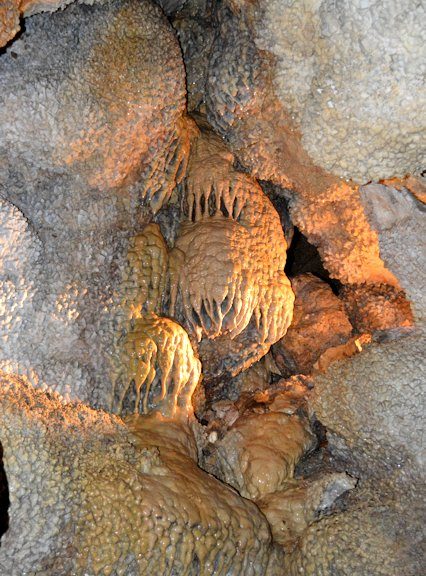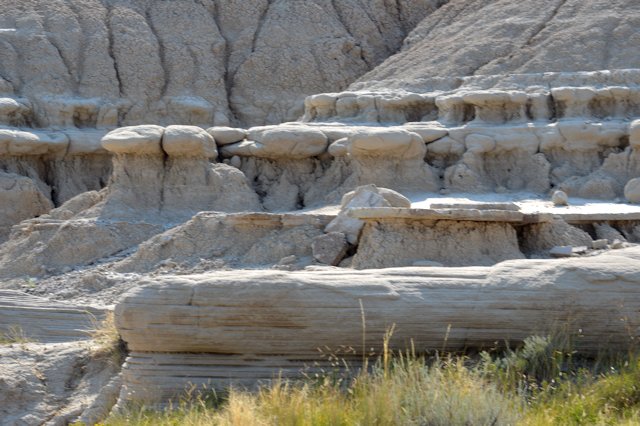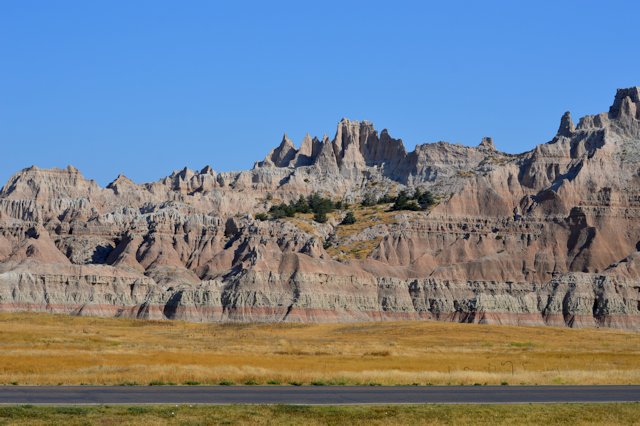While in South Dakota this year we visited a cave we missed last time. Jewel Cave is in the Black Hills, not far from Mt. Rushmore. We tried to see it last time we were here, but the tours were sold out for several hours and we didn’t have the time to wait.
This time we booked our tour a couple of days in advance so we wouldn’t have that problem. Good thing too; when we arrived the tours were full for several hours again. But, we got the one we wanted!
Jewel Cave, like so many other caves in the area, was discovered by accident in the late 1800s. At the time it was thought to be a small cave system, but in the past 30 years or so caving expeditions have discovered that it’s really one of the longest in the world. Over 190 miles of passages and rooms have been discovered and they aren’t done yet! The current caving expeditions have to crawl and wind their way through small passages for 15 hours to get to their base camp, then they spend a few days exploring, then they spend 15 hours crawling back out!
There is a ‘wild’ tour offered at this cave, but you have to be able to fit through a 24″ x 8.5″ opening so lots of people are not allowed on this tour. There’s a concrete ‘mockup’ of that size opening outside the visitor center, and while we were there we saw people trying to get through. Imagine how small that is!
We enjoyed our tour! It’s a bit colder in this cave than in others we’ve seen, at 49 degrees. Brrr! The steps and pathways are very nice, even stairs, flat paths, which is not like some other caves we’ve been in! We went up and down quite a bit, they say it’s over 700 stairs total (some up, some down). You start and end the tour in an elevator as the visitor center entrance is about 780 feet down. It’s not near the original and only natural entrance.
It’s named Jewel Cave because the men who discovered it were gold mining in the area, and on their first few trips into the cave they found formations that they thought were crystals which often grow near gold. Alas, what they thought were crystals were just calcite, formed from slowly dripping water leaving that mineral in the rock to collect.
Here are some pictures:



